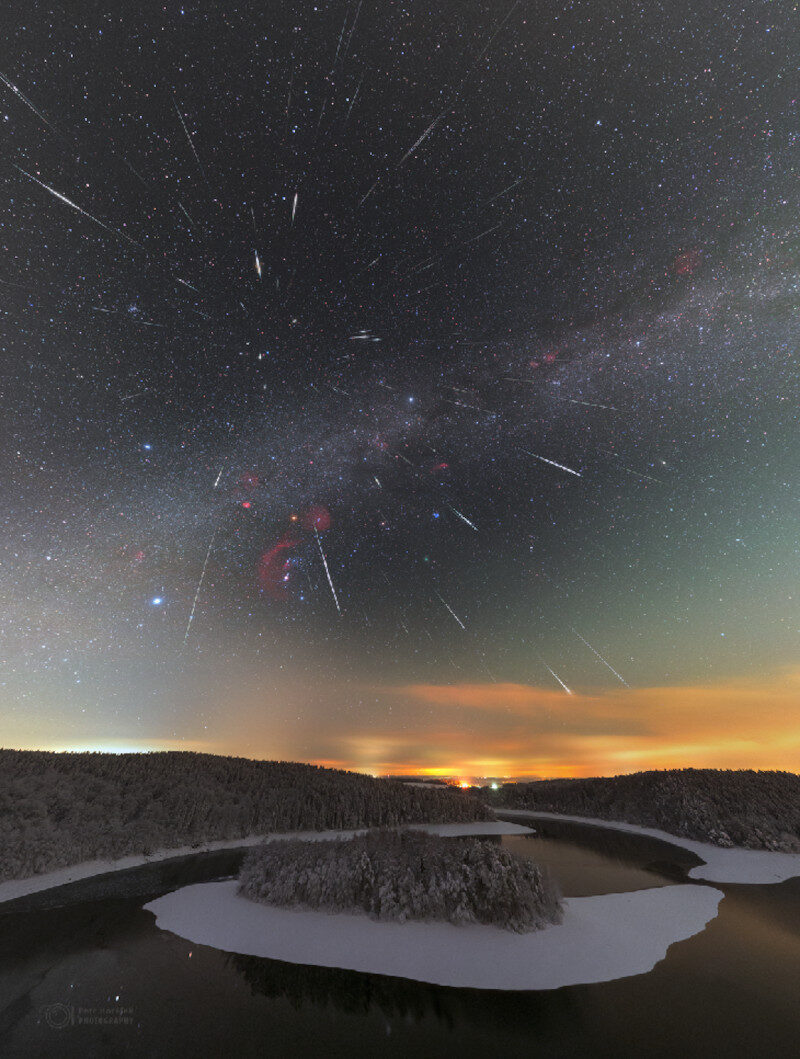
© Petr HorálekAbove: Geminids over the Czech Republic in 2018.
Every great mystery novel has an unexpected twist. Apparently the same is true of meteor showers.
A paper published in the
Planetary Science Journal reports a surprising new twist in the mystery of the Geminids, a strong annual meteor shower that has puzzled astronomers for more than a century.
"Our work has
upended years of belief about 3200 Phaethon, the source of the Geminids," says co-author Karl Battams of the Naval Research Lab. "It's not what we thought it was."
The Geminids peak every year in mid-December, scattering hundreds of bright meteors across northern winter skies. Numerically it is the best meteor shower of the year.
As meteor showers go, Geminids are newcomers. They first appeared in the mid-1800s when an unknown stream of debris crossed Earth's orbit. Surprised, 19th century astronomers scoured the sky for the parent comet, but they found nothing. The search would continue for another 100 years.
Enter NASA. In 1983, the space agency's Infrared Astronomical Satellite (IRAS) found an object now called "3200 Phaethon." It was definitely the source of the Geminids. The orbit of 3200 Phaethon was such a close match to that of the Geminid debris stream, no other conclusion was possible.
Yet here was a puzzler: 3200 Phaethon appeared to be a rocky asteroid.